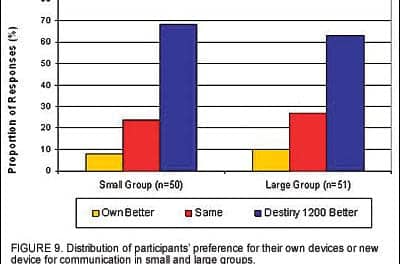
|
Judging from the explosion of press releases and online hand-wringing, the July edition of Consumer Reports was a cathartic event for hearing care—or a travesty in reporting. The article essentially says that—although hearing aids provide high levels of customer satisfaction—consumers pay high prices, get mediocre fittings, and are told little about the function of the devices (for more on the article, see “HR Online“). Press releases issued by the Academy of Doctors of Audiology (ADA) and American Academy of Audiology (AAA) correctly take issue with many of the points CR made, and emphasize differences in academic training between audiologists and traditional dispensers. However, the CR article addresses the latter fairly well, and also makes it clear they’re not pointing the finger at one profession: “But both types of professionals made mistakes in fitting the aids purchased by our 12 shoppers. Audiologists made fewer serious fitting errors than did hearing aid specialists, but in about two-thirds of all of the fittings, patients ended up with incorrect amplification.”
Let’s make two things clear: the CR article is certainly not perfect (eg, ADA rightly points out that the criteria used in determining a “fitting error” were not described), and it also is not an indictment on every dispensing office/practice. However, in my view, it does raise the issue of quality and consistency as an industry-wide concern. As one example, the HR Dispenser Survey showed that, in 2006, only 23% of dispensing offices/practices routinely performed real-ear measurement (27% HIS-owned offices, 16% audiologist-owned offices). Meanwhile, an article by Aarts & Caffee in the November 2005 HR suggests that measured REAR values are significantly different from those predicted by fitting software. In fact, less than 12% of the measured REAR values in that study were similar to the predicted values. The bottom line is that any “custom fitting” requires real-ear measurement, and far too many hearing aids are returned to manufacturers still in the “first-fit” setting. Similar arguments can be made for speech-in-noise testing, outcome measurements/validation, and counseling.
In reality, the CR article points to inconsistencies in quality relative to testing, fitting, and follow-up procedures. Brian Taylor, AuD, has written extensively in HR that process makes perfect; that is, an office/practice should establish and adhere to a guiding set of procedures that rely on evidence-based principles (EBP). Similarly, Sergei Kochkin, PhD, in his February 2003 HR article, “On the Issue of Value: Hearing Aid Benefit, Price, Satisfaction, and Repurchase Rates,” suggests we create something akin to a consumer-identifiable Good Housekeeping Seal of Approval signifying that a hearing care office displaying that seal follows a best-practice protocol. He goes on to state that “once an efficient best-practice protocol is identified, then it is imperative through clinical testing across multiple dispensing sites that we validate the protocol or demonstrate that it has a positive impact on the consumer and the dispenser of hearing instruments.”
Last month, the Hearing Loss Association of America (HLAA) published “Purchasing a Hearing Aid: A Consumer Checklist” that provides a peek into what HLAA is looking for relative to dispensing procedures. As good as the checklist is, another message it conveys is that, if our field doesn’t start making decisions about quality processes, we run the risk of letting others make those decisions for us. Several professional organizations have issued white papers on best-practice guidelines; it’s time to look closely at these and hang those EBP-based procedures on every waiting-room wall.
The kneejerk reaction is to view the CR article as a painful trip to the woodshed. I think that’s a mistake. In virtually every survey, hearing aids and hearing care professionals get high marks for customer satisfaction—and the CR article says as much. In my view, the CR article points us to the promised land; through best practices, EBP, and a greater emphasis on process, we have a golden opportunity to improve the patient journey and raise customer satisfaction to even higher levels.
Karl Strom
Editor-In-Chief





